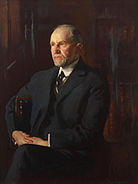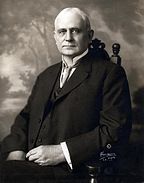United States House of Representatives elections, 1920
|
|
|||||||||||||||||||||||||||||||||
|---|---|---|---|---|---|---|---|---|---|---|---|---|---|---|---|---|---|---|---|---|---|---|---|---|---|---|---|---|---|---|---|---|---|
|
|||||||||||||||||||||||||||||||||
|
All 435 seats to the United States House of Representatives 218 seats needed for a majority |
|||||||||||||||||||||||||||||||||
|
|||||||||||||||||||||||||||||||||

|
|||||||||||||||||||||||||||||||||
|
|||||||||||||||||||||||||||||||||
The 1920 United States House of Representatives elections, were held to select members of the United States House of Representatives in the 67th Congress of the United States. It coincided with the election of President Warren G. Harding, the first time that women in all states were allowed to vote in federal elections after the passage of the 19th Amendment.
The incumbent Democratic administration of Woodrow Wilson lost popularity after the conclusion of World War I in 1918, as American voters hoped to return to isolationism and avoid military conflict in the future. Heedless of the prevailing national mood, Wilson advocated American leadership in a new international order under the League of Nations, alienated voters of German and Irish ancestry, and constantly struggled with a Congress controlled by the opposition Republican Party. Harding and the Republicans promised a new start for the nation and a disassociation from Europe's political troubles that most voters found appealing. As a result, the Republicans picked up 63 seats in the House of Representatives, with most of the gains coming from Democratic-leaning districts in the big industrial cities and the border states. Many of these districts elected Republican representatives for the only time in decades, including the Missouri district of Democratic leader Champ Clark. Although the South remained solidly Democratic for the most part, the Republicans secured more than 90% of the seats outside the South, which gave them their largest majority of the 20th century. The 67th Congress is the most recent in which the Republican Party won greater than a two-thirds majority of seats in either chamber.
...
Wikipedia



